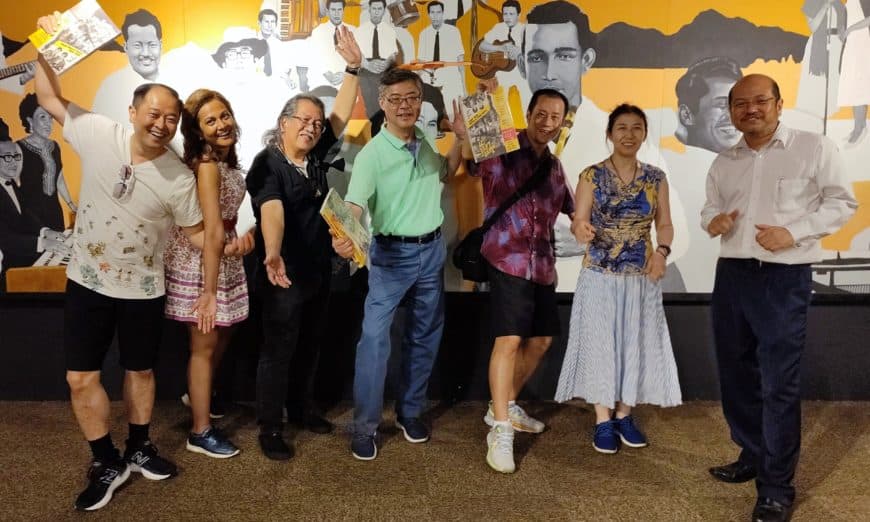PENANG is noted for having many tourist attractions, including the unique Penang House of Music (PHoM) located on the fourth floor of Komtar in George Town.
PHoM has proven itself to be a one-of-a-kind tourist attraction that showcases the enormous depth of Penang’s music and culture not only through the exhibits that tell the story of Penang’s rich multicultural history in its Gallery but also through its Resource Centre, which houses one of the largest collections of Malaysia’s music, culture and arts’ intangible heritage.
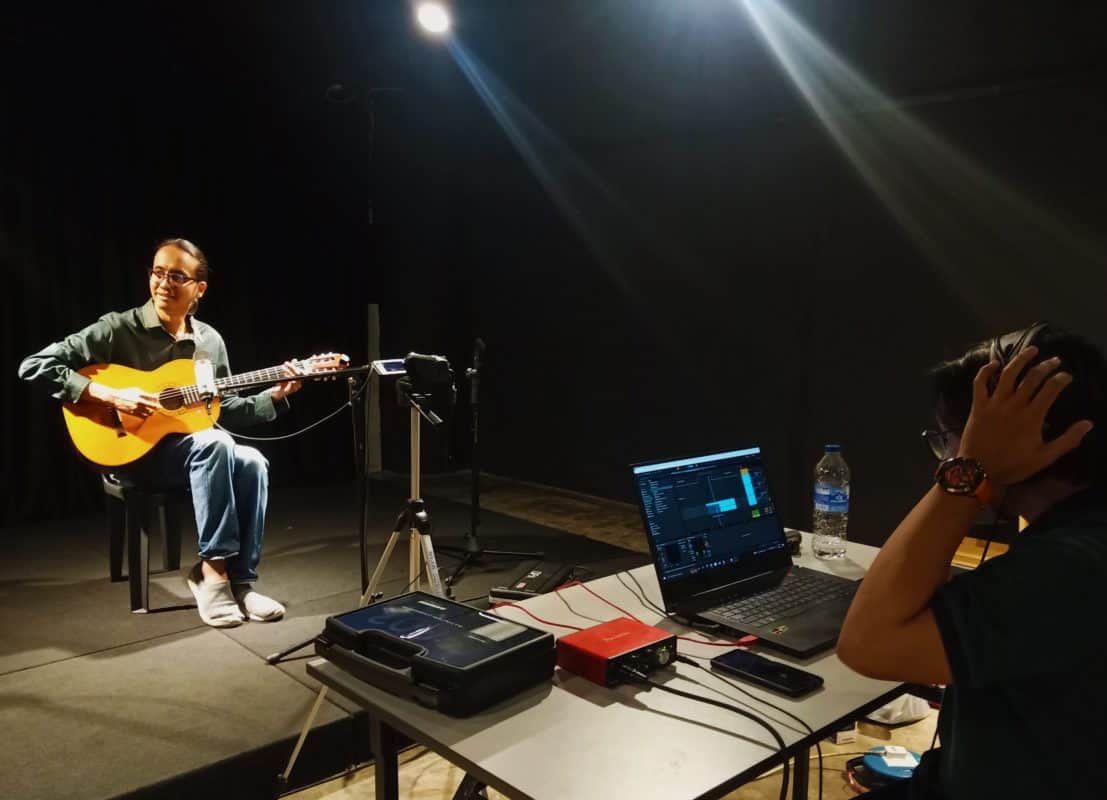
In fact, PHoM is a prime example of the foresight of the Penang government in initiating its establishment through funding from Penang Water Supply Corporation (PBAPP) and support from the Chief Minister’s Office, in line with the state government’s aim and vision to establish a heritage and creative arts city.
This project has evolved through time and gone beyond expectations.
The Book That Became a House
Asked how PHoM began, its founder Paul Augustin said it was an unplanned endeavour, beginning with a couple of exhibitions on Penang’s popular music at the Penang State Museum and evolving into the publishing of a book co-written by James Lochhead and him titled “Just For The Love Of It – Penang’s Popular Music from the 1930s – 1960s” in 2015.
That apparently set a benchmark for Malaysian pop culture-related publications. Such was the attraction and demand of the book, that it has seen three print runs (incidentally its first print in 2015 sold out in less than 2 months).
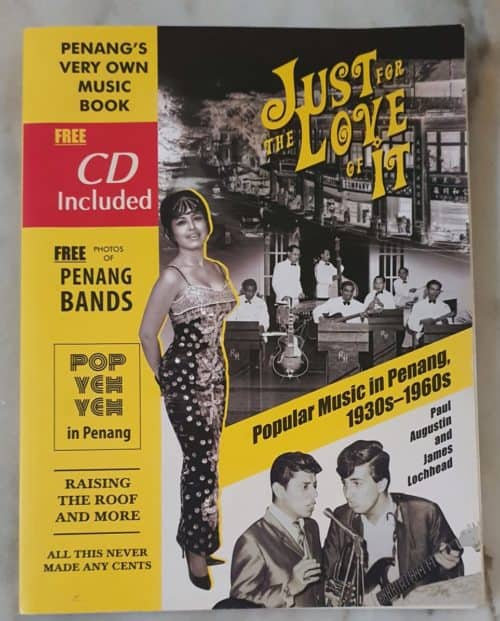
Following the success of the book, the then PBAPP chief executive officer Datuk Seri Jaseni Maidinsa asked the authors of the book what they intend to do with the research information they had gathered when writing the book.
The answer, they gave, was to find a place to store it, a place accessible especially to the younger generation for posterity.
The writers felt very strongly that the older generation of people involved in the music, culture and arts had to be recognised and acknowledged for their invaluable contribution to not only Penang but also to Malaya/Malaysia.
Thus after a proposal was submitted and funds were made available by PBAPP with support from the Penang government, the Penang House of Music was realised and built from the pages of the book.
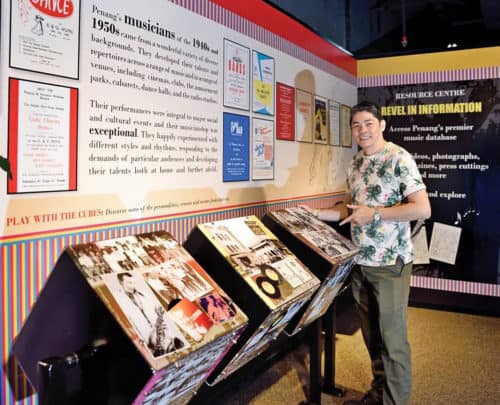
PHoM consists of three main components: a Gallery, a Black Box and the heart of the place – the Resource Centre.
The creative design of PHoM was done by Adrian Cheah, who aimed to create an immersive and authentic representation of Penang’s vibrant music culture as it was as much to him a deeply personal and rewarding passionate project as he was also the designer of the book.
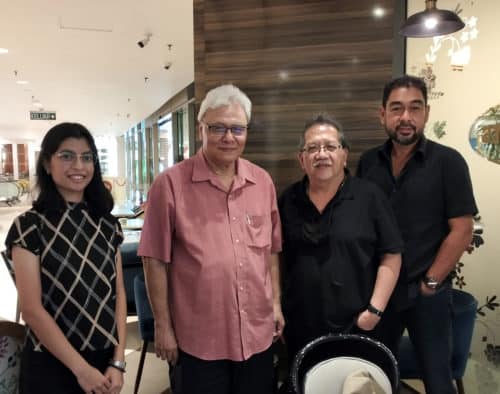
When the House becomes a Home
PHoM opened its doors to the public on Nov 21, 2016, and since then this unique Penang government-initiated project has ticked all boxes, and grown in leaps and bounds.
Within a period of less than 18 months, PHoM got listed No. 1 on the international travel portal – Trip Advisor on places to visit in Georgetown, a position it holds till today and has also been listed at No. 10 in CNN Asia Travel as Top 25 things to do and eat in Malaysia.
PHoM has generated an average of 10,000 local and foreign visitors per year, including families, students and prominent personalities.
Many of those being featured in the Gallery are still alive and they are graciously acknowledged and recognised for their creative contribution to the state and nation to hopefully serve as an inspiration for the younger generation.
Many who have visited the Penang House of Music have been captivated by its works.
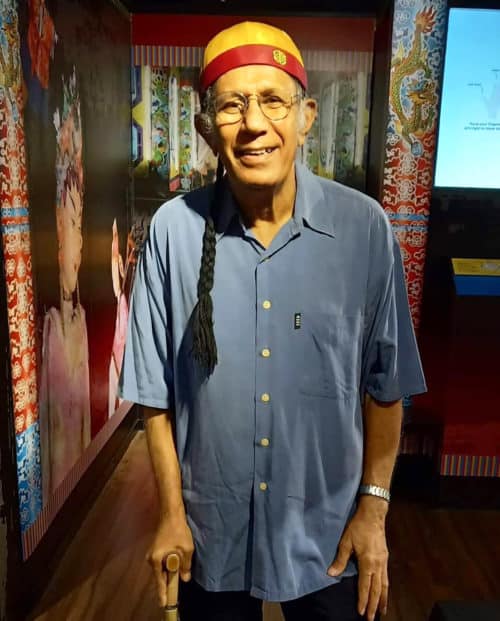
Think City chairperson Datuk Seri Anwar Fazal said PHoM is a global gem of a museum and cultural place that brilliantly captures the story of music in Penang.
“It is an enchanting place to visit and celebrate music, songs and singers like no other,” said Anwar, one of Penang’s greatest cosmopolitan extraordinaires.
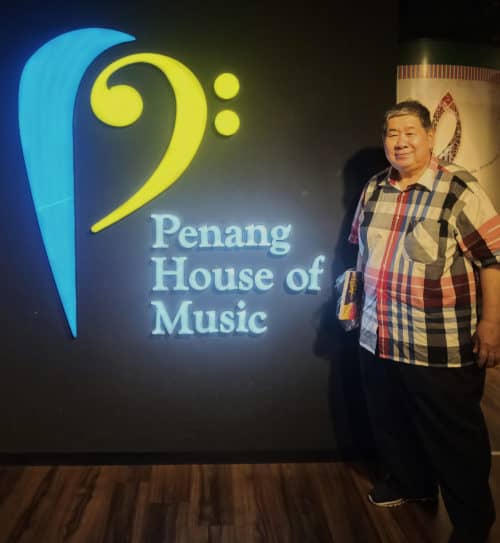
Datuk Yong Soo Heong, a former Bernama chief executive officer and editor-in-chief, said PHoM is a gem of a vibrant “cultural fountain” that traces various facets of Penang’s fascinating musical journey from the 1900s till today.
“Its showcase of top “Orang Penang” musicians and singers like P. Ramlee, Lee Yee, Ahmad Daud, Ahmad Nawab and The Alleycats, to name a few, bowled me over completely.
“As a child of the Sixties, I especially like PHoM’s display of paraphernalia related to the pop culture of my generation. Like what we did when we wanted certain songs played on the airwaves because not everyone can buy the latest vinyl record then! Music streaming or the Internet were still being toyed around in the heads of innovators,” Yong, a Penangite, said.
Ahmad Muriz Che Rose, who is head of Music Talent Development at the Malaysian Philharmonic Orchestra (MPO), is also impressed with what PHoM has been doing.
He said: “Being a born and bred Penang musician, I would have to say that my visit to Penang House of Music was breathtaking! By all counts a beacon that amplifies not only of Penang’s heritage but the entire nation’s arts and culture establishment.”
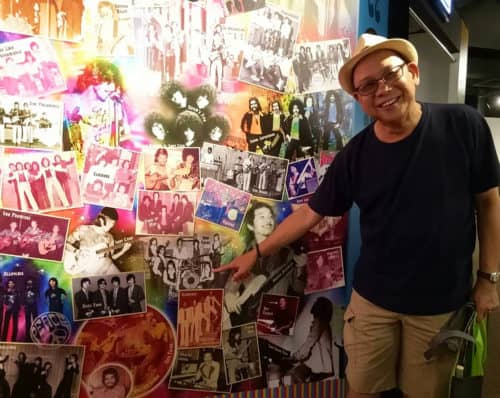
Penang-born keyboardist Goh Boon Hoe said a visit to PHOM brought him memories and echoes of the past.
The exhibits, he said, are meticulously curated from the birth of Penang’s local music scene to its contribution to the Malaysian music industry of today.
“There lies a wealth of cultural knowledge that I personally hope will inspire the dreams of future generations.
“As I walked through the halls of exhibits, memories flooded my mind like a wave of nostalgia. Seeing especially photographs of friends, I couldn’t help but reflect on how far I’ve come since those days.
“It was a reminder that while we can’t go back in time, we can always cherish the memories and use them to inspire us for the future,” said Goh, a music composer & producer and owner of Bumble Bee Studios Indonesia.
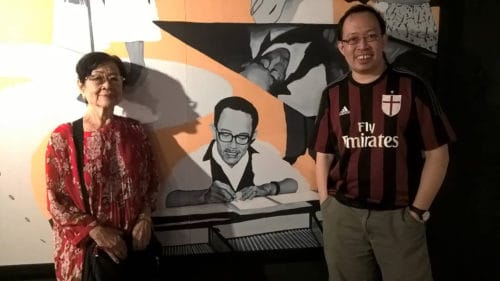
Dr James P.S. Boyle, son of the late legendary musician Jimmy Boyle, was very moved when he first visited PHoM.
He described PHoM as a shining beacon of hope for the present and the future generations of the arts not only in Penang but also Malaysia in general.
“Seeing my dad’s image being featured in many photos and images in the Gallery was both surreal and magical for my mum, wife, son and me as we felt he was ‘there’ with us, as he always has been.
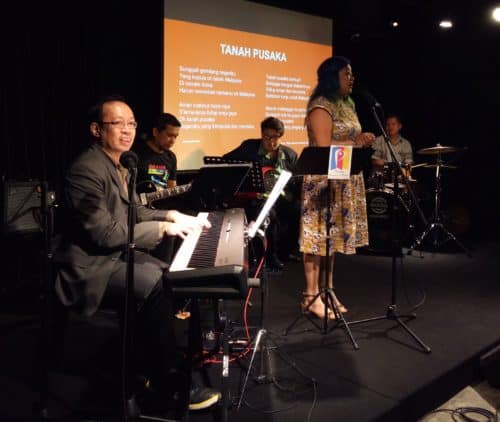
“After all these years, he is still teaching us through his endless musical research and manuscripts which is now preserved and archived by Paul and his team.
“Penang House of Music, bridging the memories by honouring those dearest to our hearts,” he remarked.
PHoM’s reputation as a kinesthetic learning experience of music, culture, arts and social studies grew substantially and attracted a growing number of group visits from a wide range of educational institutions (local and international) of all ages, ranging from kindergartens to schools, colleges and universities.
Internship placement applications were received within the first year of its operations as universities (both local and foreign) recognised PHoM’s potential as an excellent training ground for its students.
Researchers in Music, Arts, Culture, History, Anthropology, Sociology and Design made a beeline to its Resource Centre which became renowned for its vast collection of anything and everything related to music, culture and performing arts.
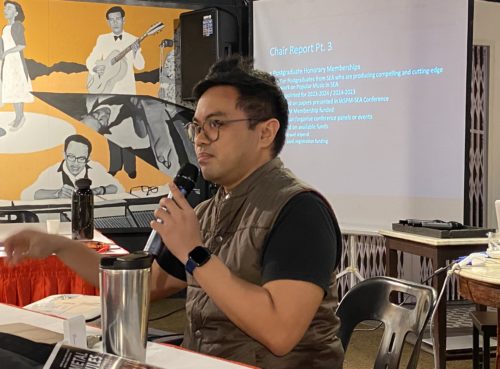
Dr Adil Johan, a musician, researcher & Senior Lecturer Faculty of Creative Arts, at Universiti Malaya, said PHoM is a bastion of hope in the preservation of Malaysia’s rich multicultural past.
“Its efforts to preserve and remember the music and arts of Malaysia and the region have already contributed new insights into how the people of the region defined their identities and experienced their lives.
“PHoM reminds us through its existence that music and the arts are essential to humanity and also provide us with key ideas on how we can foster a humane future,” Dr Adil Johan said.
Pandemic and Shut Down
During the Covid-19 pandemic, PHoM had to temporarily shut its doors just like many other businesses.
But PHoM continued to stay relevant and resourceful with its staff members working from home by documenting, digitising and cataloguing its growing collection. It also collaborated with practitioners and other organisers to provide PHoM as a venue for online streaming services and programmes.
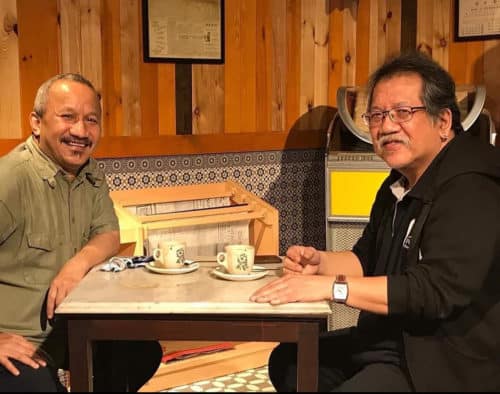
“Paul Augustin and his team have done an amazing job with this labour of love project! Something Penang should be very proud of, his continued passion for collecting and archiving precious material that is important to our music and art history legacy,” former George Town Festival director Joe Sidek commented.
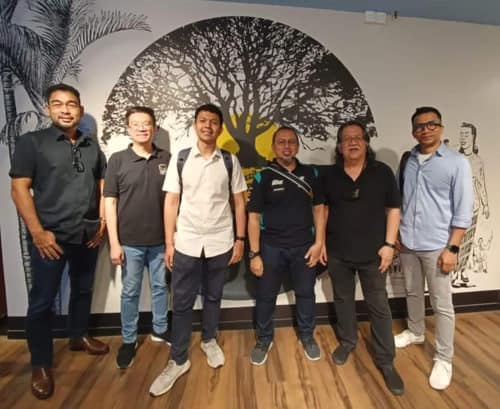
Behind this dark cloud, there was a silver lining as PHoM’s collection and reputation as a Research Centre rapidly grew throughout the nation and even beyond the shores of Malaysia. It gained attention from UNESCO’s Culture Unit in Bangkok, Singapore National Gallery and other international documentation and preservation institutions, agencies and organisations.
More than 60 articles on and about PHoM were written by the media, emphasising the importance of the work that PHoM is doing for the intangible history and heritage of the state and country.
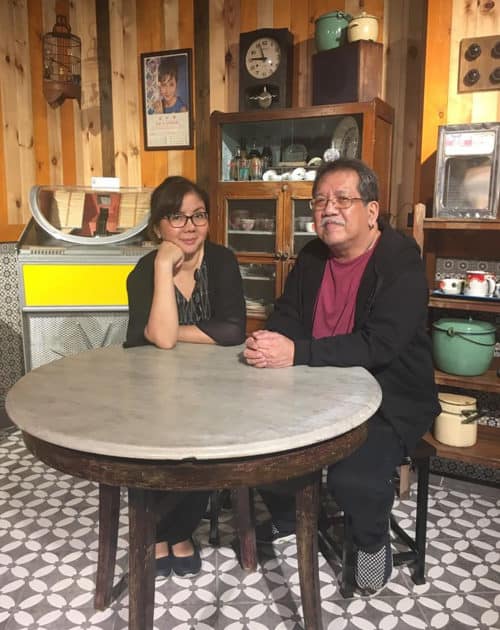
Dr Shazlin Amir Hamzah, a Research fellow at the Institute of Ethnic Studies (KITA), Universiti Kebangsaan Malaysia (UKM), who has visited PHoM several times for research purposes, emphasised that PHoM is the right place to go if anyone is looking for historical records regarding Malaysia’s music scene.
Additionally, she said her requests for research materials have always been met with helpfulness and competence from their knowledgeable staff.
Penang Players Music and Drama Society vice-chairman Jayaram Menon said as a sanctum dedicated to Penang’s musical traditions, the PHoM is peerless.
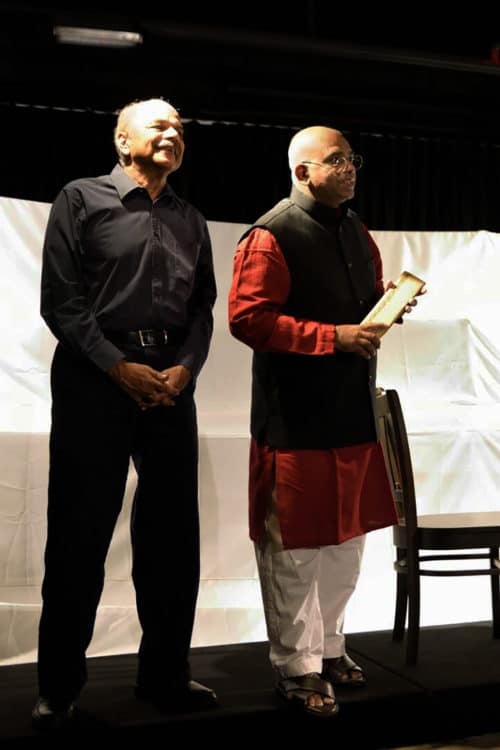
“The prime mover, Paul Augustin, who tends to this sound-filled temple resolutely, is the personification of a forensic historian who gleans lost art and weaves a living narrative for all of us about the Island’s multi-genre soul.
“May PHoM always continue to archive and showcase our musical odyssey,” Jayaram said.
Lifting of Dark Clouds
Upon the lifting of the movement control order (MCO), PHoM gradually reopened to visitors. As it pivots towards building a foundation as a service provider for digitising processes, adviser on documentation and cataloguing, it has even developed a partnership with one of the world’s foremost preservation technology solution providers – Piql Malaysia.
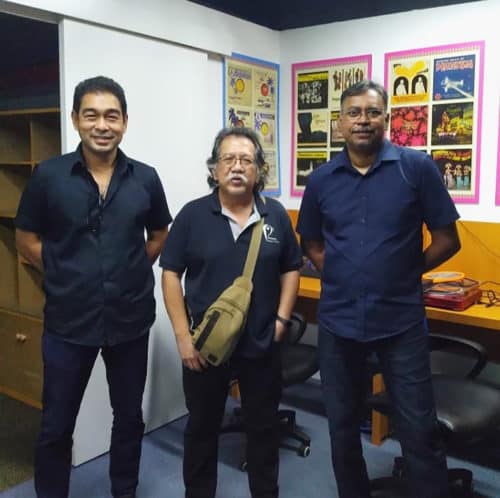
Dinesh Virik, the managing director of Piql Malaysia, said PHoM exemplifies the embodiment of heritage preservation for Malaysian music, culture and performing arts.
“A tour of this mini museum fills the old with nostalgia and the young with joyful experience (and more importantly, knowledge) of our diverse traditional culture and heritage,” he said.
PHoM continues to be a unique attraction for tourists and is still maintaining its No. 1 position on places to visit in George Town in Trip Advisor.
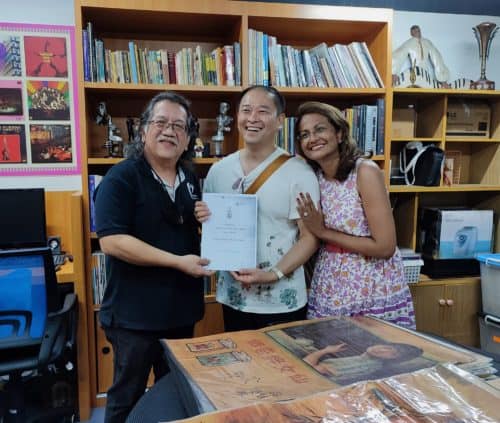
Michael Yong-Haron, a Hong Kong-based art patron & co-founder of The Michael & Saniza Collection, was in Penang recently for his artist grandfather, Yong Mun Sen’s Exhibition paid a visit to PHoM with his wife Saniza Othman and commented, “It gave me a great sense of pride about Malaysia’s deep history of music. So nostalgic of a time that was open, fun and embracing.”
Educational groups have once again started to visit and conferences and talks have also started to be held in PHoM. Performance events organised internally or by external parties have also started sporadically in the Black Box.
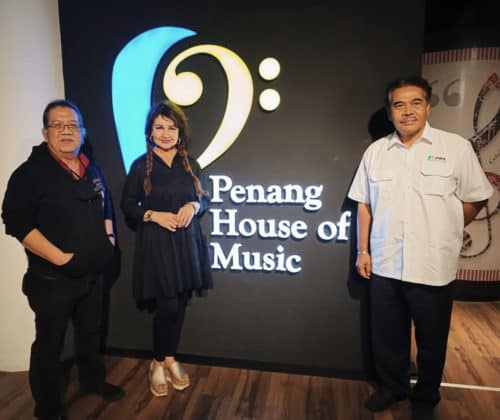
Puan Sri Shariffa Sabrina Syed Akil, president PEKA (daughter of Penang’s famed 1960s trumpet player Syed Agil), feels musicians of the past need to be honoured and remembered for their tireless contribution to music that built a foundation for artists of today.
She said these musicians of the past are of natural talent, gifted and should be remembered through generations to come.
Az Samad, a guitarist, composer & educator, sees PHoM as a vital institution for the growth and preservation of Malaysian music.
He said the house’s collection (including books, magazines, recordings and documents) helps people understand how music has evolved over time within our culture.
“Every time I visit, I learn something new and feel connected to the ongoing story of music in Malaysia.
“Exploring the past has greatly influenced how I approach and appreciate music, especially with genres like jazz, rock and pop in Malaysia. Knowing where we come from musically and historically is important because it helps us create art with more knowledge and respect for the contributions of past musicians,” Az Samad said.
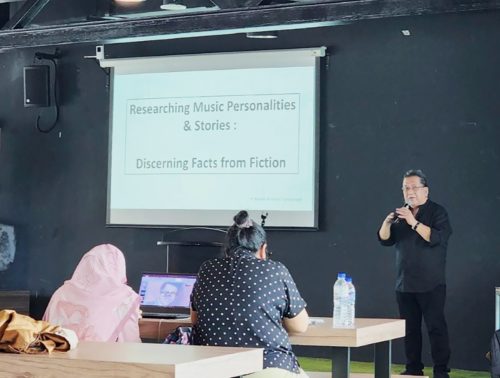
Going Beyond
Knowing that the industry is ever-evolving especially with the many challenges being presented by unforeseen worldwide climatic developments, PHoM adopts the proverb that “fortune favors the brave” and continues to take risks and push its boundaries.
PHoM, together with a team of like-minded academics, co-organised its first “Echoes, Shadows & Footprints” Symposium bringing together for the first time academics, practitioners and government agencies on a level field to share, discuss and exchange ideas with a common goal of sustaining, preserving and developing the music, culture and arts industry.
The abovementioned symposium helped spawn a few possibilities for PHoM. One of which is an important collaboration on the research and development of the usage of musical therapy in the medical field of mental illness and another is to offer their experience and expertise to other institutions and corporations in documentation, digitisation and preservation of intangible valuable materials.
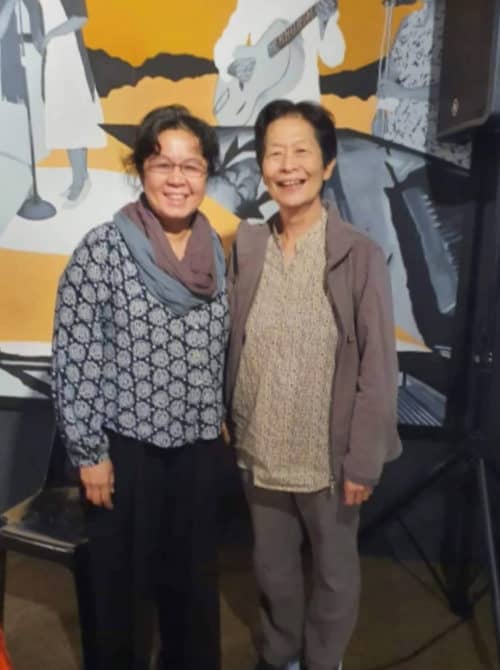
Dr Indra Selvarajah, a member of the World Federation of Music Therapy Council and UPM Music Therapy lecturer, said she recognised the immense potential PHoM holds as an invaluable resource for music therapy.
“From special needs children to individuals with mental health needs, and even older adults battling chronic illnesses such as dementia and Parkinson’s Disease, the Penang House of Music offers a vast array of therapeutic possibilities – the historical value and the cutting-edge solutions it can provide, particularly through fields like music therapy,” she said.
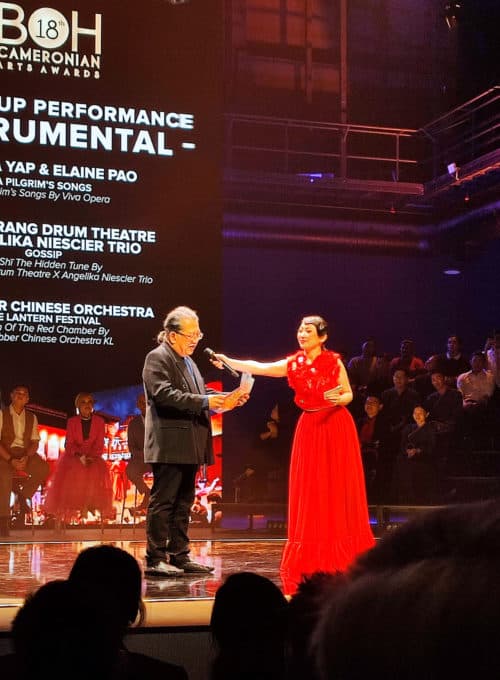
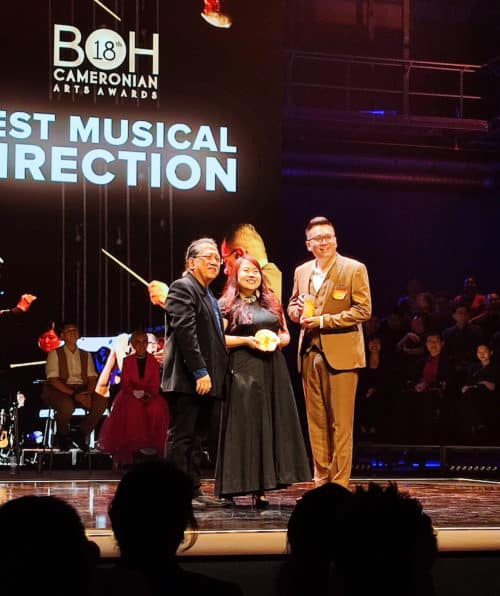
In recent years, members of PHoM, notably Augustin, have been regularly invited to give talks and presentations at universities, conferences and symposiums.
Augustin was given the honour of announcing and presenting the awards for the music category at the prestigious 18th Boh Cameroonian Arts Awards Ceremony on May 14.
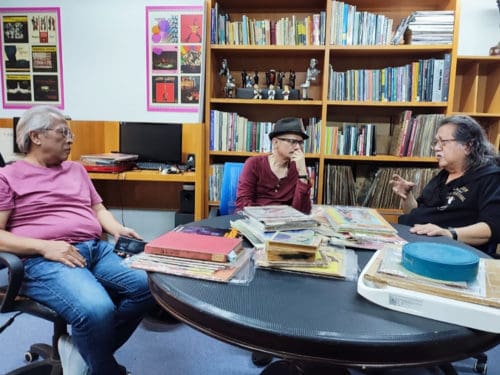
Asked what the future holds for PHoM, Augustin referred to a recent conversation he had with Prof Khairul Azril, the deputy rector of ASWARA on the tree analogy.
For Augustin, he feels that PHoM is a fine example of the analogy, the roots and foundation of PHoM have been established over the years with knowledge by experience; the trunk is a reflection of what PHoM currently is – a custodian and storyteller of Penang and the country’s history through the medium of music, culture and the arts.
“With the main two parts of the “tree” being firm and stable, the future growth possibilities for PHoM are endless as the “branches” of the tree can but only explore and spread as far and wide as the imagination allows,” Augustin said smilingly.
Story by K.H. Ong
Pix courtesy of Penang House of Music

